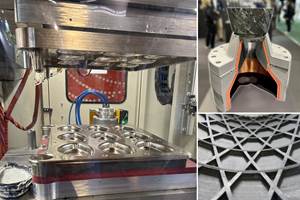Metsä Group’s Kuura textile shows competitive GHG levels to existing commercial fibers
A recent LCA shows that compared to viscose, lyocell and cotton fibers, large-scale production of Kuura would result in less environmental impact.
Share
Source | Metsä Spring
(Espoo, Finland), the innovation company of Metsä Group, has completed a new life cycle assessment (LCA) of its Kuura textile fiber produced from softwood pulp, with results indicating that the large-scale production of the material would result in reduced greenhouse gas (GHG) emission levels.
To assess the environmental impact of a possible first commercial-scale mill producing Kuura, Metsä Spring asked technology service company Etteplan (Espoo) to conduct a study using standard LCA methodology. The study results were reviewed by RISE Research Institutes of Sweden. Kuura’s production process is also currently being tested and developed at a greenfield demo plant in Äänekoski, Finland, which features a nominal capacity of approximately 1 tonne/day.
The assessment shows that Kuura’s global warming potential (GWP100, fossil) score is less than one-third of the next best option, viscose. GWP is a term used to describe the relative potency, molecule for molecule, of a greenhouse gas, considering how long it remains active in the atmosphere. Kuura's GWP is only one-quarter of cotton fiber and more than 80% lower than the impact of lyocell fiber.
“Metsä Group aims to introduce a new textile fiber product to the market that would be competitive on many different metrics,” says Niklas von Weymarn, CEO of Metsä Spring. “Environmental impacts, and in particular the potential to mitigate climate change, is one key metric. Our assessment with external experts shows that our chosen concept has great potential. This will give impetus to further development.”
Contributing to Kuura’s success is the fact that it would, on an industrial scale, be produced and integrated into Metsä Group’s existing pulp-processing mill, which the company says does not use any fossil energy. In practice, the bioproduct mill generates significant amounts of excess renewable energy (steam, electricity and so on), which would be used to meet the energy demand of producing Kuura.
Kuura is produced from softwood Kraft pulp, not from dissolving pulp, which is commonly used as raw material in the production of man-made cellulosic fibers such as lyocell and viscose fibers. The wood for pulp production would be procured from forests located close to the pulp and textile fiber mills.
Von Weymarn says the main use pathways for Kuura (based on market volume) include the following: Spinning the fiber into a yarn and processing the yarn into knitted of woven fabrics, and manufacturing nonwoven fabrics. “A third, although smaller potential application area is various composite structures,” von Weymarn tells CW. “Other man-made cellulosic fibers (like viscose) are already used in such structures today and so might also be an opportunity for the Kuura fiber. On a lab scale, we have tested the use of our fiber as a reinforcing component.”
“We have shown that integrating the textile fiber production into a modern mill results in a product with a clear climate change mitigation potential compared to the use of existing commercial textile fibers,” adds Markus Nuopponen, R&D manager and member of the Kuura project at Metsä Spring. “Even if the assessment is still based on design data and will have to be tested on an industrial scale, we believe that this proves that we are on the right track with Kuura production.”
In addition to the LCA results, Kuura has also achieved good scores based on the Hot Button Ranking evaluation arranged by the Canadian not-for-profit environmental organization Canopy. Kuura was awarded for the fourth consecutive year with a “Green Shirt” rating, the requirements of which are a risk-free, transparent supply chain and traceable raw materials.
Related Content
Plant tour: Collins Aerospace, Riverside, Calif., U.S. and Almere, Netherlands
Composite Tier 1’s long history, acquisition of stamped parts pioneer Dutch Thermoplastic Components, advances roadmap for growth in thermoplastic composite parts.
Read MoreDevelopment of a composite liquid hydrogen tank for commercial aircraft
Netherlands consortium advances cryogenic composites testing, tank designs and manufacturing including AFP, hybrid winding, welding of tank components and integrated SHM and H2 sensors for demonstrators in 2025.
Read MoreJEC World 2024 highlights: Thermoplastic composites, CMC and novel processes
CW senior technical editor Ginger Gardiner discusses some of the developments and demonstrators shown at the industry’s largest composites exhibition and conference.
Read MoreOtto Aviation launches Phantom 3500 business jet with all-composite airframe from Leonardo
Promising 60% less fuel burn and 90% less emissions using SAF, the super-laminar flow design with windowless fuselage will be built using RTM in Florida facility with certification slated for 2030.
Read MoreRead Next
Fibroline, Navis TubTex to inaugurate U.S. Innovation Lab
Grand opening of a U.S. facility will enable more readily accessible customer synergies for dry power impregnation and textile solutions.
Read MoreSpirit sells off Fiber Materials Inc. business to Tex-Tech Industries
Purchase agreement of high-temperature materials business will be added to Tex-Tech’s specialty textiles and fabrics portfolio following customary approvals.
Read MoreCeramic matrix composites: Faster, cheaper, higher temperature
New players proliferate, increasing CMC materials and manufacturing capacity, novel processes and automation to meet demand for higher part volumes and performance.
Read More









